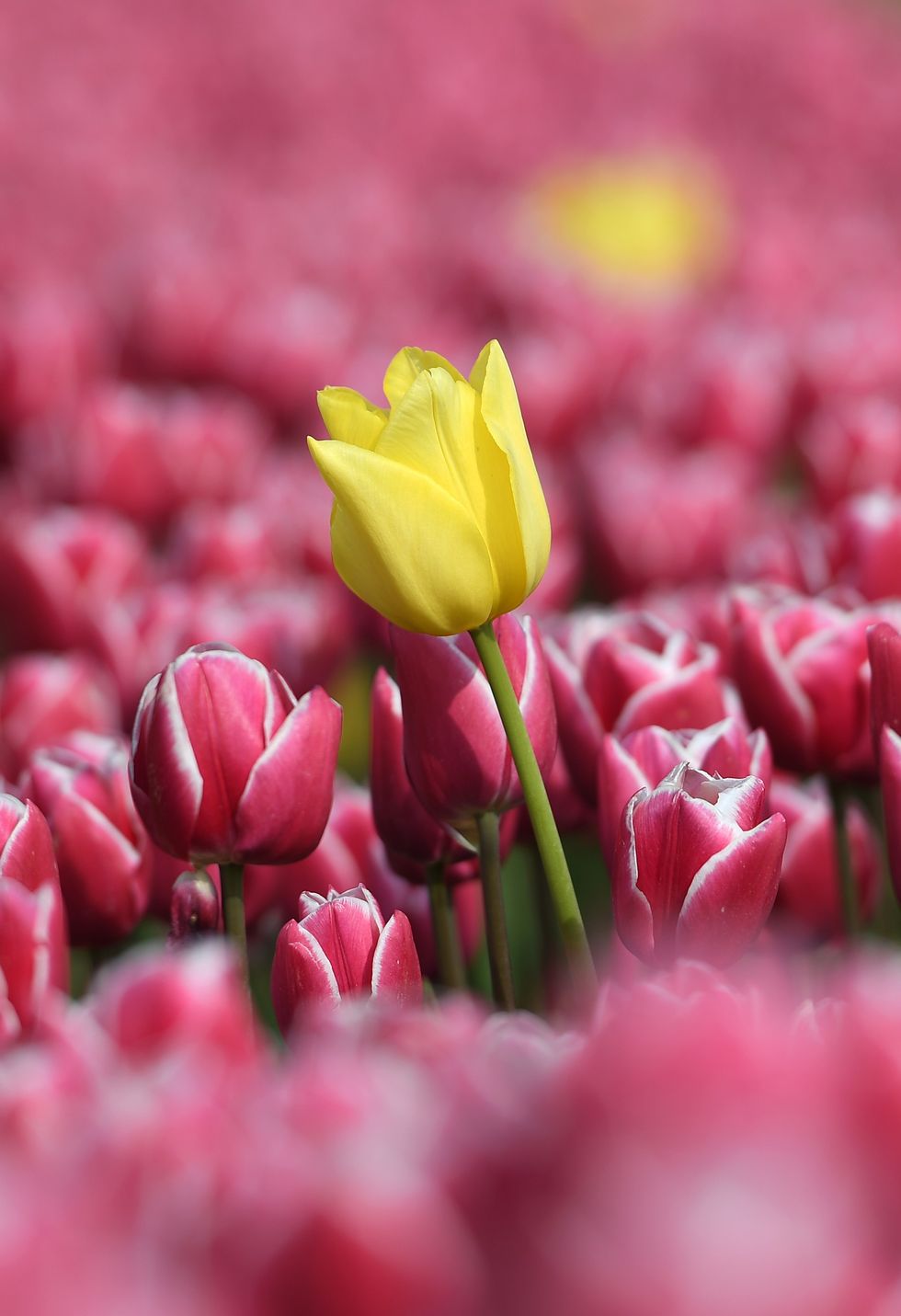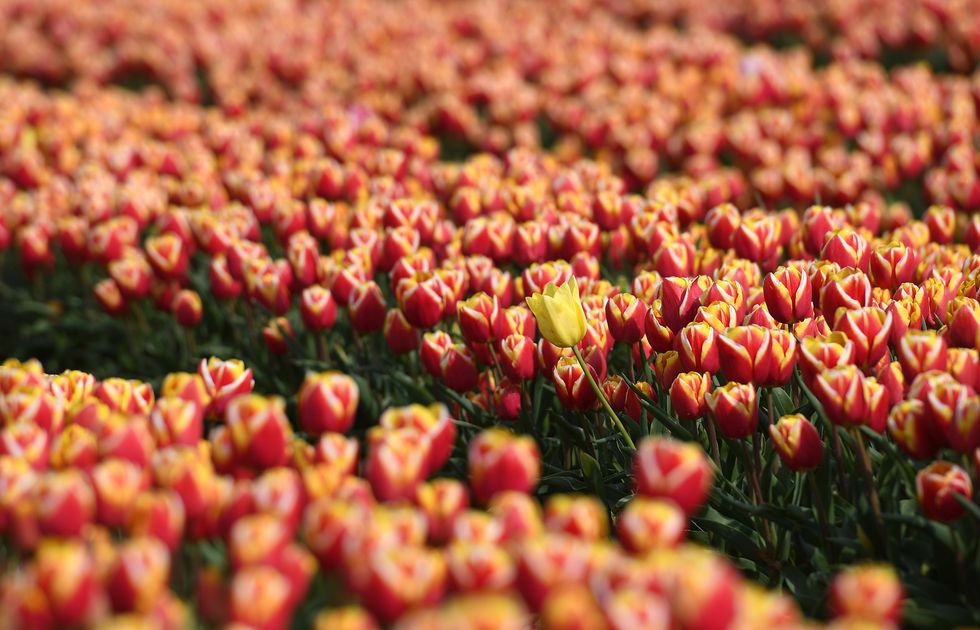In the garden with GB News: Tulips - everything you need to know for a colourful display in your garden and making them last in your home

GB News shares everything you need to know about tulips
|GETTY

GB News is sharing everything you need to know about how to grow and care for the plants in your garden and home. This week, we look at how to grow tulips and look after them while they are on display inside your home
Don't Miss
Most Read
Tulips are a colourful addition to any garden and the flowers tend to bloom at this time of the year.
GB News shares the best tips to help you grow a colourful display outside and how to look after tulips inside your property.
Everything to know about caring for tulips
Planting
The best time to plant tulips is in autumn, around October to November, in order to get a beautiful display that blooms in spring. Britons who put the work in last year will enjoy the flowers blooming between March and May, depending on the variety.
However, those who have not planted these do not need to miss out as they are widely sold in flower shops and supermarkets to keep inside.

Tulips are a colourful addition to any garden
|PA
When it comes to planting, gardening expert at Allan's Gardeners Jane Dobbs shared advice. She told GB News: "The best time to plant tulip bulbs is mid to late autumn, in moist, well-drained soil in a sunny spot. November is ideal before the first frost, or December if you live in a very mild climate.
"But don't throw out your bulbs if you didn't plant them before Christmas, even bulbs planted in early January can do well. Even though tulips are technically perennials, breeding to get beautiful blooms means many varieties only bloom once a year.
"Some varieties of tulips bloom earlier than others. Early-flowering varieties bloom from late March to April, mid-season bulbs bloom from April to May, and late-flowering varieties bloom in May. It's better to grow a mix to last longer. It's also possible to mix up the shape, height, and colour of the flowers."
How to plant
Tulip bulbs should be planted around 5cm apart and at three times the depth of the bulb. Tulips like sunny spots and it is important to water them after planting to encourage root growth.
Jane continued: "It's best to put your tulips in a sunny, sheltered spot with good drainage. When you plant tulips in a border, plant them behind perennials - the perennials' emerging foliage will shade the leaves of the tulips.
"If your soil is heavy clay or sandy, incorporate plenty of well-rotted organic matter before planting. For heavy soil, add some horticultural grit to the bottom. Tulips thrive in full sun, so pick a spot with at least six hours of sunshine a day.
"Planting bulbs in autumn is easy. Use a trowel or bulb planter to dig a hole and drop the bulb in. Plant tulip bulbs three times their height deep, about 5cm apart. Tulips look best in mass. Water tulip bulbs after planting to help settle the soil and encourage root growth. But don't overwater, it'll lead to bulb rot."
It is also a good idea to plant tulips in pots. Jane continued: "Tulips grow great in pots and in peat-free multi-purpose compost. Plant the bulbs in the half-full container with peat-free multi-purpose compost, three times their depth, with a few centimetres between them.
"There's less concern about plant health issues with potted tulips as they won't be planted in the pot next year, so you'll want to place them closer together than you would with tulips grown in the ground. Then you can top it off with compost. When growing tulips in pots, you've got to plant fresh bulbs every year."
How to care for tulips in the garden
Tulips can reflower year after year but there are some important care steps gardeners should follow to get them looking their best. This includes deadheading after they have flowered and cutting back foliage.
"You can keep tulips in the soil all year round so they will reflower, but they may not look as good and may be shorter and smaller than before," Jane continued.
"The key is to make sure all the energy from the leaves goes back to the bulbs. It's better to deadhead plants after flowering to avoid them wasting energy on seeds.
"Once the foliage has turned yellow, about six weeks after flowering, you can cut it back. It makes the bulbs weaker the following year if you cut back the foliage too early."
LATEST DEVELOPMENTS

There are some ways to help tulips last longer
|PA
How to make tulips last in homes
Tulips are widely available in shops when they are in season and they can last a long time in your home if you look after them properly. A great hack is to pick a bouquet that hasn't fully bloomed as these plants are likely to last longer.
After taking them home, cut the stems at an angle and remove any leaves that sit below the water line. Keep the vase clean and refill the water every couple of days to keep it fresh, adding flower food when possible.
Location is also important so keep away from spots that are in direct sunlight as this can cause the plants to die more quickly.
Tulip care timeline
Spring
Water: "Tulips bloom and grow in spring, so they need water. You've got to keep them moist. Get rid of spent blooms to keep your plant flowering and avoid it from producing seeds."
Fertilise: "Apply a balanced fertiliser to give your plants the nutrients they need. Watch out for pests like aphids and slugs, spring is the time when garden pests emerge."
Summer
Water: "In summer, tulips are dormant, but they still need occasional water, especially when it's hot and dry. Use mulch around tulip bulbs to keep them moist and prevent weeds. If you grow tulips in pots, move them to a shaded area to protect them."
Autumn
Planting: "This is the perfect time to plant tulip bulbs for spring blooms. Pick a location with good drainage and a lot of sun."
Check for disease: "Check the bulbs for disease and rot before planting. To keep squirrels from digging up your tulip bulbs, cover the planting area with chicken wire or sprinkle with red pepper flakes - it deters squirrels and other rodents."
Winter
Mulch: "In winter, make sure tulip beds aren't waterlogged or swollen with too much moisture, which can cause bulb rot. If you live in a colder climate, cover tulip bulbs with mulch or straw to prevent them from getting too cold. Then they won't get damaged by frost and will survive winter."
Prepare for spring: "Winter months are also great to get ready for spring by planning your garden, selecting new varieties and getting any supplies you need."
If looking for more gardening tips, check out the GB News guide with everything you need to know about lilies. Find out more tips for mowing your lawn this year.










